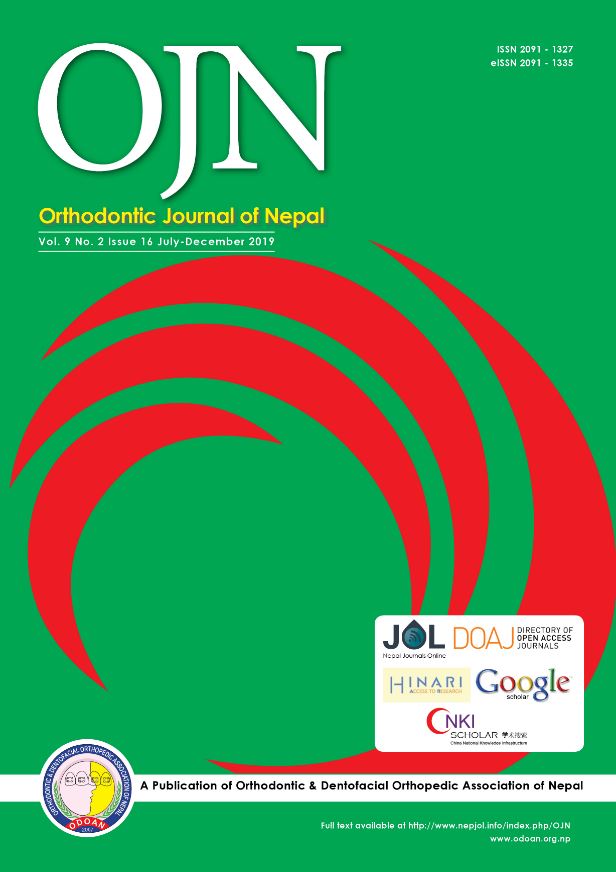Delaying Premolar Extraction for Conservation of Anchorage: A Prospective Case Control Study
DOI:
https://doi.org/10.3126/ojn.v9i2.28414Keywords:
Anchorage, Anchorage Loss, Delayed Extraction, Early Extraction, PremolarAbstract
Introduction: Anchor loss (AL) is the most common side effect of orthodontic treatment. Anchorage planning is the vital step of every orthodontic treatment. The aim of this study was to evaluate the amount of anchor loss of maxillary first permanent molar in early v/s delayed premolar extraction cases treated using fixed orthodontic mechanotherapy.
Materials & Method: Sixty orthodontic patients, having either Class I or Class II Division 1 malocclusion with no or minimal crowding were divided equally into early extraction and the delayed extraction group (30 each). The patients were treated using MBT prescription 022” slot brackets with standard wire sequencing until 0.019”x 0.025” stainless-steel wire. Pre and post levelling study models were used for assessing the amount of space loss using palatal rugae as a stable point from the points marked on the 1st molar (point A on mesiobuccal cusp and point B on the distobuccal cusp). The obtained data was tabulated and was subjected to statistical t test (p<0.05).
Result: The distance of point A to the 3rd rugae reduced after treatment by 0.39mm (3.4%) and by 0.48 mm (3.24%) in delayed and early extraction groups respectively. Similarly, the distance from point B was reduced by 0.48 mm (3.24%) and by 1.77mm (6.28%) in delayed and early extraction group respectively. The change in point A and point B in Early extraction cast group was 76% and 71% more respectively than the delayed Extraction cast group. All the findings were statistically significant (p<0.05).
Conclusion: Anchor loss is an inevitable after effect following premolar extraction. Greater chances of anchor loss in early extraction group is noted. And delaying premolar extraction in cases with mild crowding (<4mm) can effectively help in anchorage preservation.
Downloads
Downloads
Published
How to Cite
Issue
Section
License
Copyright © held by Orthodontic & Dentofacial Orthopedic Association of Nepal
- Copyright on any research article is transferred in full to the Orthodontic & Dentofacial Orthopedic Association of Nepal upon publication in the journal. The copyright transfer includes the right to reproduce and distribute the article in any form of reproduction (printing, electronic media or any other form).
- Articles in the Orthodontic Journal of Nepal are Open Access articles published under the Creative Commons CC BY License (https://creativecommons.org/licenses/by/4.0/)
- This license permits use, distribution and reproduction in any medium, provided the original work is properly cited.




